Raspberries are delicious and easy to plant and grow. Whether you grow summer bearing or fall bearing, red, yellow or black, knowing how to prune raspberries effectively is easy! The best time of year to prune can make all the difference to get the best harvest of sweet fruit the following year.
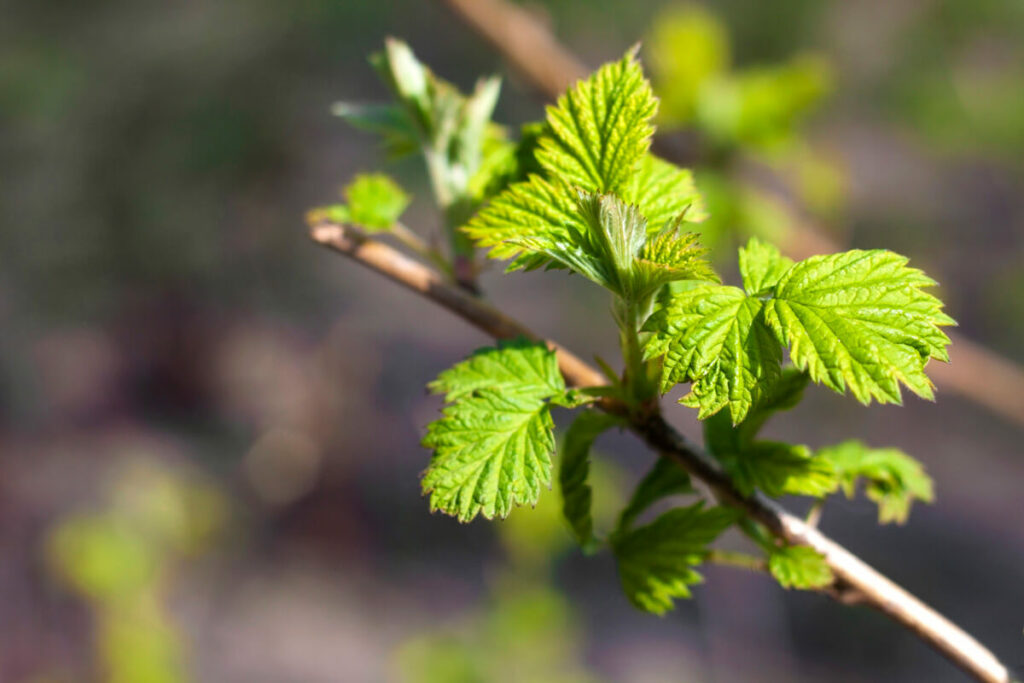
Raspberries are one of my favorite berries to grow, harvest and eat. I love the versatility of this delicious perennial berry! Learning how to plant raspberries and experiencing the joy of the harvest when they bear fruit is so worth the wait, my friends!
Plus, what would life be without fresh raspberry juice or these raspberry lemon cream cheese muffins?
Once planted, knowing how to prune raspberries keeps the fruit coming back strong year after year. The variety of colors from these fruiting canes is beautiful on the homestead. Red, yellow and purple add a vibrant splash of color against their lush green leaves.
The importance of pruning raspberries is right up there with knowing how to prune elderberries and how to prune blueberries. The point is that you must prune these bushes to gain the full benefit and bountiful harvest of these immune-building berries.
I love knowing that each year, pruning keeps healthy plants that provide baskets of berries to make homemade jams and jellies, easy homemade dump cakes and cobblers, sweet syrups and treats my family loves.

The most notable difference in varieties is between summer-bearing and fall-bearing raspberries. Both grow canes (primocane and floricane) consisting of woody shoots growing from the perennial root but producing fruit at different times during their growth cycle.
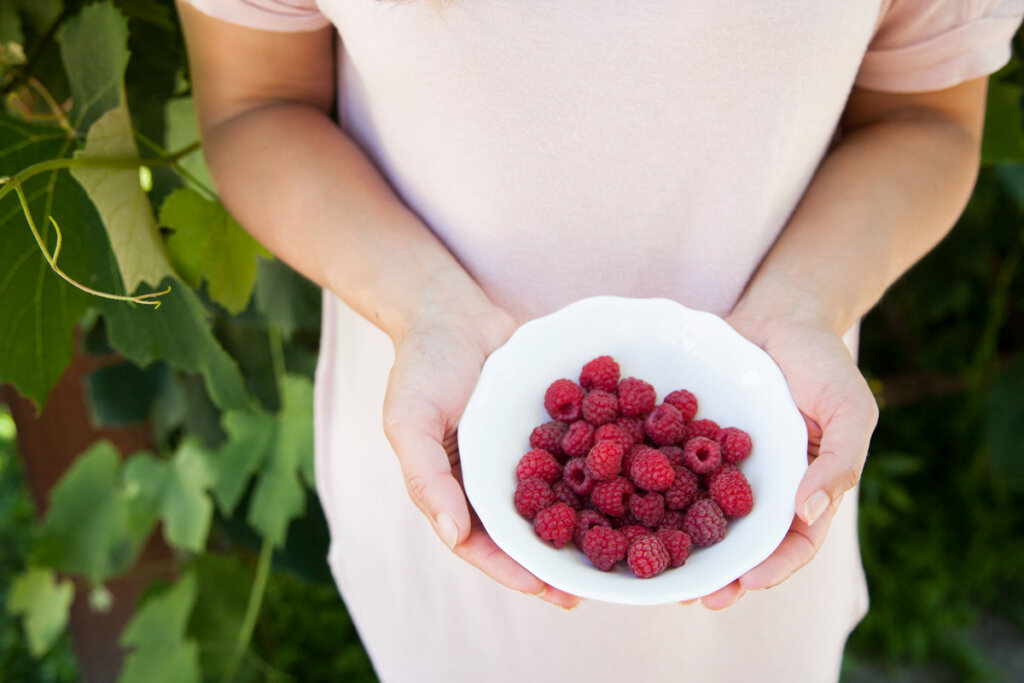
Summer-bearing raspberries produce berries on canes that grew the summer before. The first year, they were green primocanes which produced leaves but didn’t flower or fruit. They grow one year and produce berries in their second year of growth.
The red raspberry roots and crown are perennial, returning every year, but the canes are biennial, only living for two years. They have thick, long stems with soft, vibrant green leaves.
In the second year of growth, you will have floricanes from buds that grew the previous year and now have fruiting branches that will flower and produce abundant fresh berries for the summer months.
I aim to preserve berries in jams, jellies, and syrups, so summer-bearing is the best variety for this purpose. I get the majority of the fruit I need to preserve and dehydrate for the year all at once.
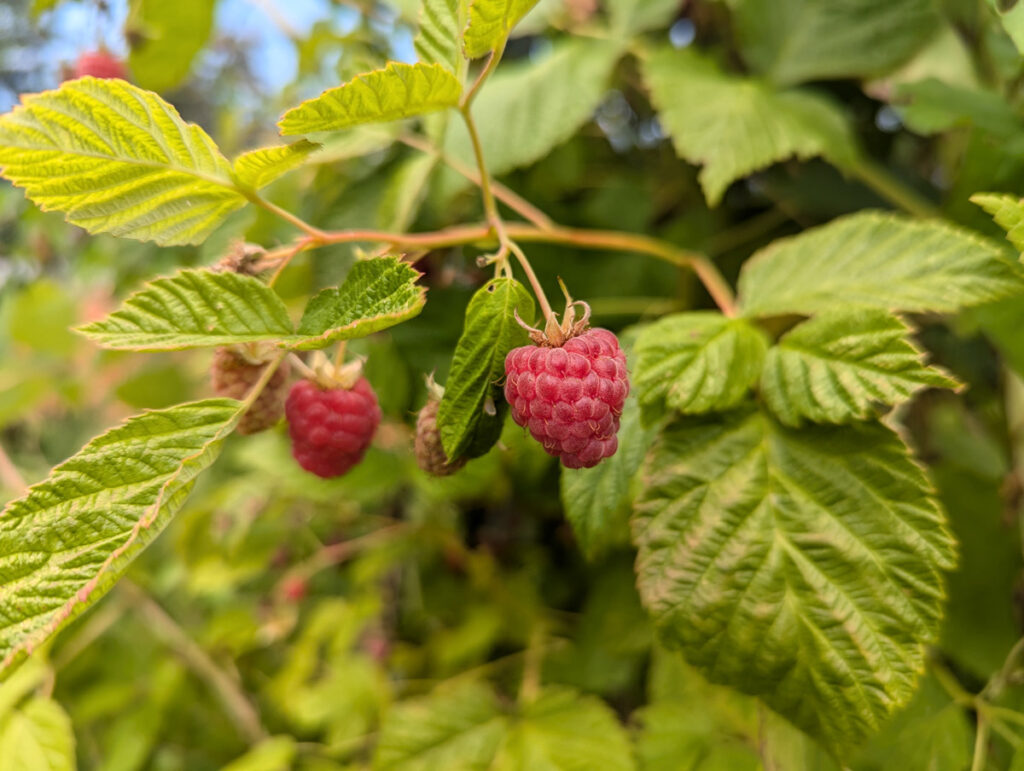
Ever-bearing or fall-bearing raspberries will produce berries on the tops of the primocanes that grew within the first season early in the summer. They also produce berries from the florocanes (second-year primocanes) for an early fall crop.
If the vigorous canes overwinter well and are pruned correctly, the everbearing variety can flower again in the early summer of the second season.
Floricanes have three leaflets on shorter stems. They are smaller, bushier-looking plants with darker leaves. After fruiting, they typically die back to the crown of the plant after the fall crop.
I find with my raspberry planting keeping like varieties together makes pruning easier and more efficient. When you have a big garden, my friends, who doesn’t appreciate keeping it simple and more efficient? I know I do!
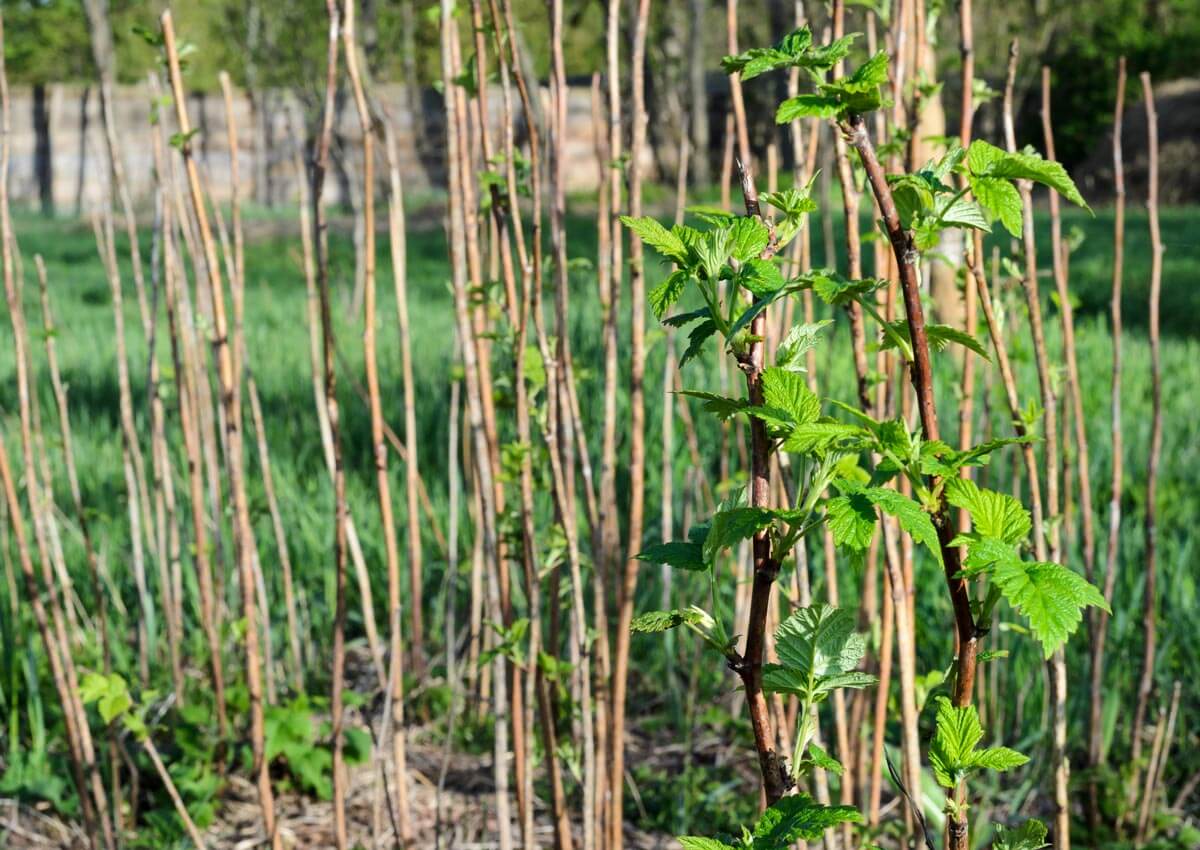
Primocanes or summer-bearing raspberries are best pruned after they go dormant, usually in early spring, depending on where you live. Cold climates can cause dormancy earlier, so late winter pruning is fine, too.
Floricanes on everbearing varieties should be pruned while dormant so they can produce fresh, strong shoots for the next growing season.
When to prune berry bushes will give you detailed information on when and why to prune your bushes at the right time according to the weather, not the calendar.
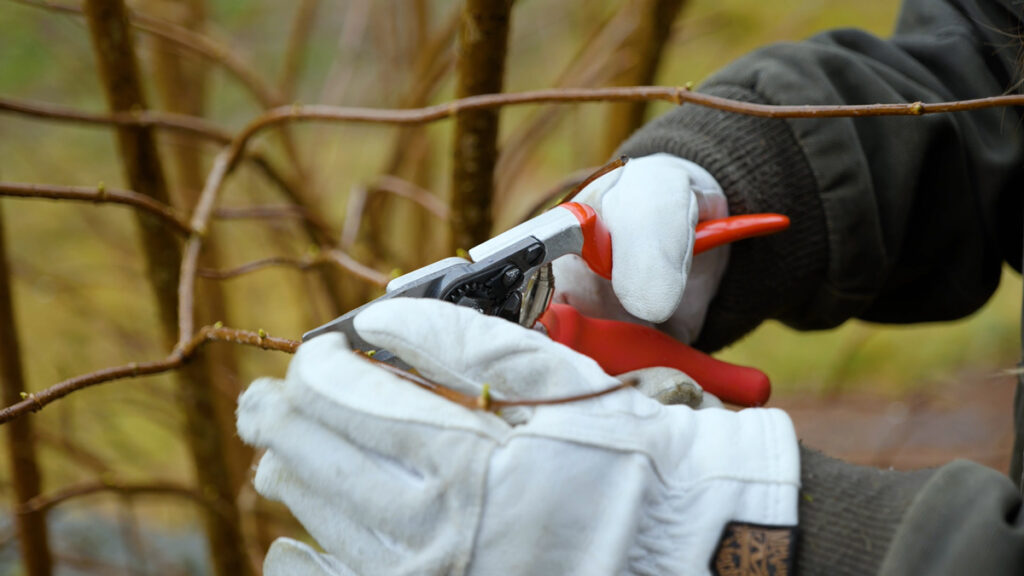
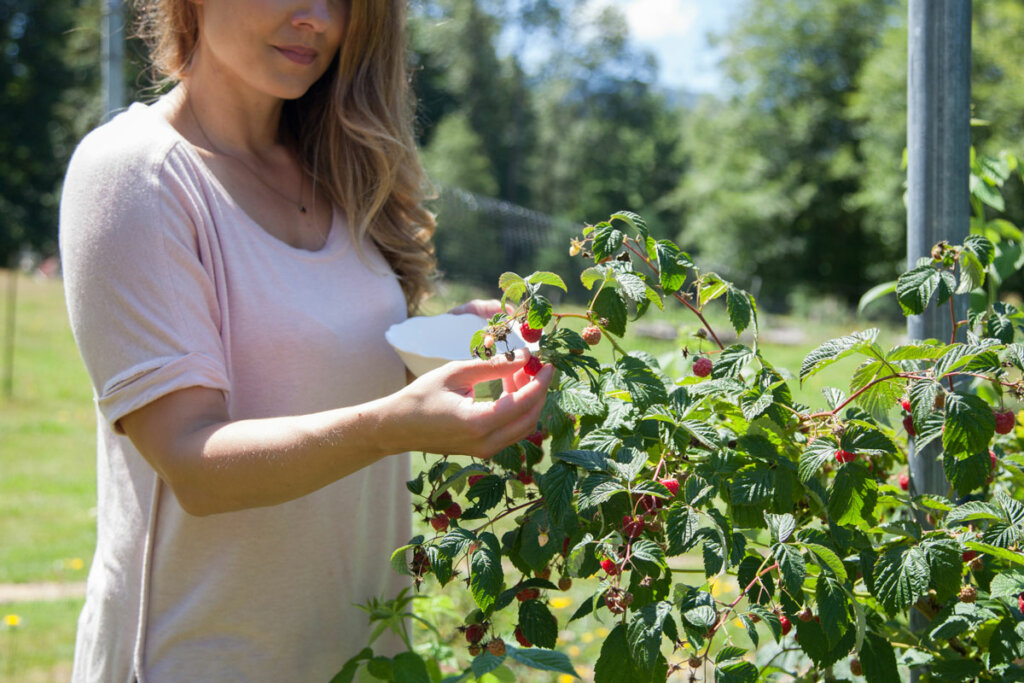
Remove the old canes from last summer in late winter or early spring when the raspberries are dormant. The dead canes will be grayish and brittle and easily snap off with pruning shears.
Prune the dead and damaged canes first, clearing them out and placing them in your garden cart or wheelbarrow. Prune the healthy-growing cane back to ground level within a few inches or so, and thin the canes to one every six inches.
Everbearing raspberries can produce two hearty crops a season since they produce berries on the top of the new primocane and again on the older florocane.
Prune out the old floricanes that have died and prune the primocanes down two to three inches from the ground to become the next floricanes. The best time is during dormancy and before new growth has begun in early spring.
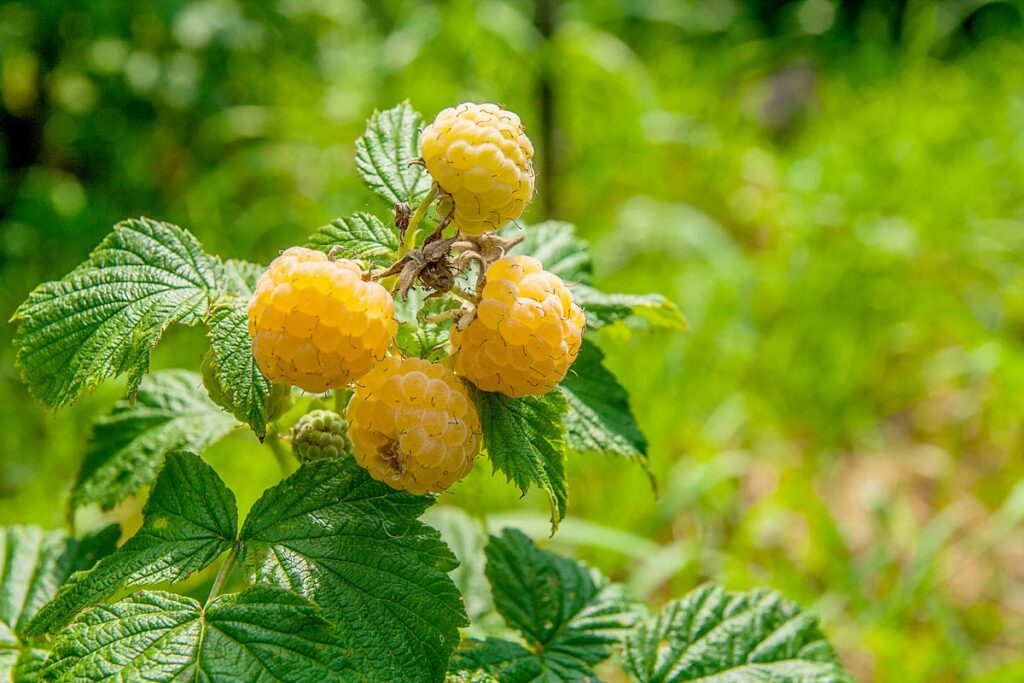
There are summer-bearing (Honey Queen) and fall-bearing varieties of yellow raspberries, such as Fall Gold and Anne. Determine which ones you have before pruning.
The summer-bearing yellow raspberries need all the dead, weak, diseased or damaged canes removed at ground level. Keep the stronger, pliant, and healthy-looking canes. Keep a grouping of two to three healthy canes about six inches apart, and prune back about two feet in height.
The fall-bearing varieties will produce two crops a year when you prune out the weak, diseased canes at ground level when they are dormant. Pruning the healthy canes down to ground level will produce a single crop in late summer or fall.
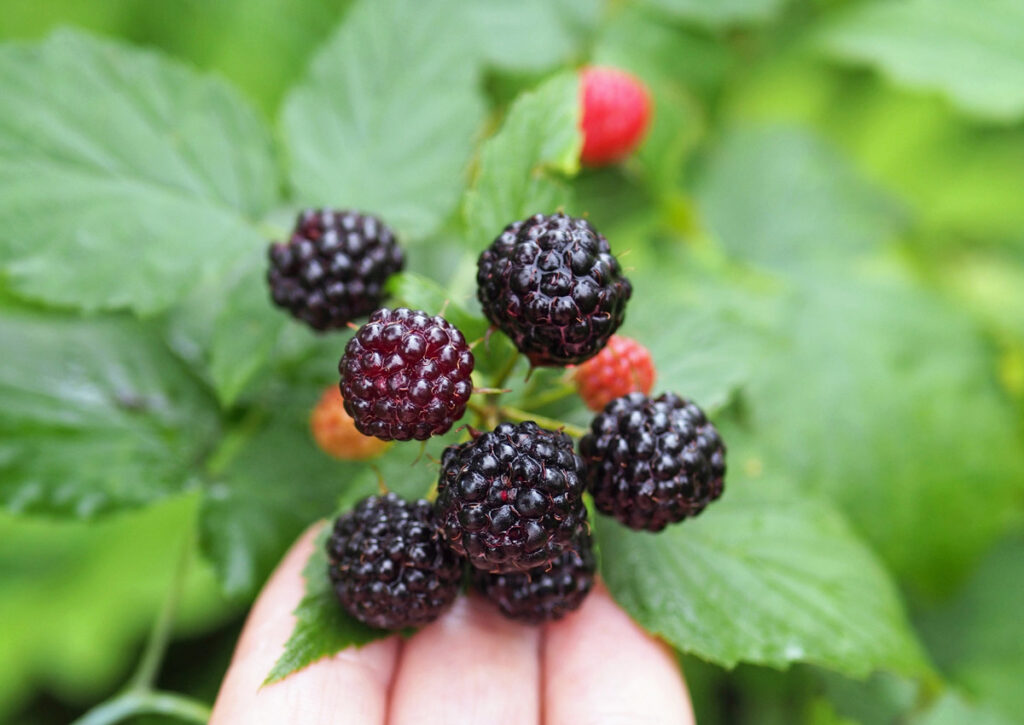
Black and purple raspberries are hybrids of red and black raspberries with arched instead of upright canes. They need a little more attention when it comes to pruning. They produce their canes from the base of the old canes, not the roots.
To get more branches, they need to be pruned back early in the growing season. Prune three to four inches off the primocane to encourage branch growth. Trim blackcaps to a height of two feet and purple varieties to two and a half to three feet. You may have to do this once or twice over the summer.
During dormancy, prune out the weak, damaged and diseased canes, leaving behind a grouping of three to five healthy canes. Prune back the lateral branches to a foot in length and leave the unbranched healthy canes about two feet from the ground.
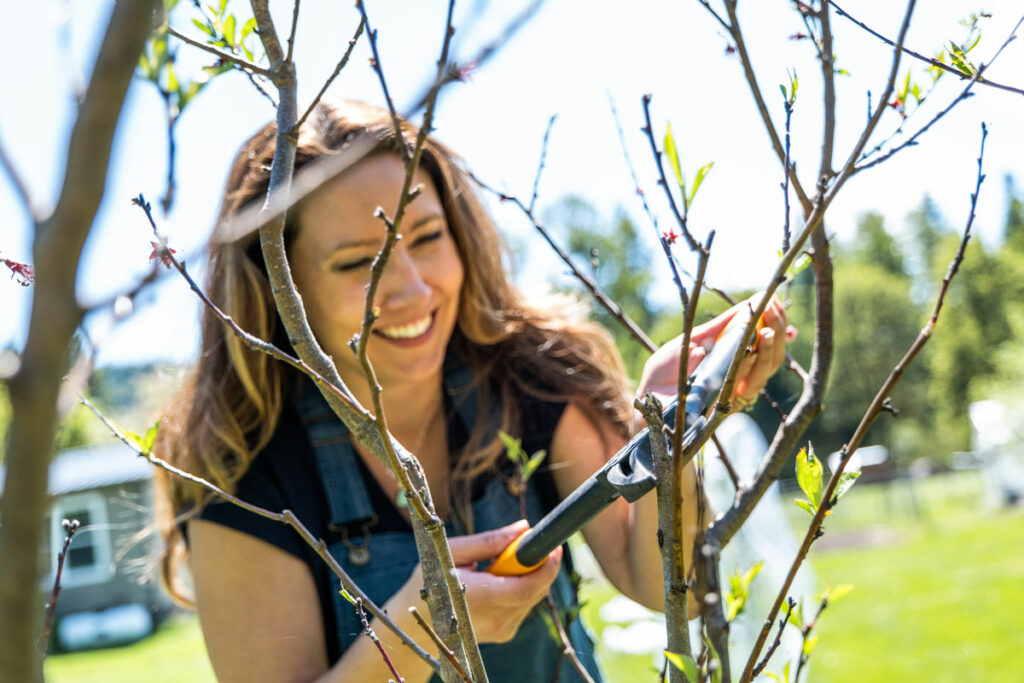
The post How to Prune Raspberries appeared first on Melissa K. Norris.

The Importance of Pruning Raspberries
Raspberries are one of my favorite berries to grow, harvest and eat. I love the versatility of this delicious perennial berry! Learning how to plant raspberries and experiencing the joy of the harvest when they bear fruit is so worth the wait, my friends!
Plus, what would life be without fresh raspberry juice or these raspberry lemon cream cheese muffins?
Once planted, knowing how to prune raspberries keeps the fruit coming back strong year after year. The variety of colors from these fruiting canes is beautiful on the homestead. Red, yellow and purple add a vibrant splash of color against their lush green leaves.
The importance of pruning raspberries is right up there with knowing how to prune elderberries and how to prune blueberries. The point is that you must prune these bushes to gain the full benefit and bountiful harvest of these immune-building berries.
I love knowing that each year, pruning keeps healthy plants that provide baskets of berries to make homemade jams and jellies, easy homemade dump cakes and cobblers, sweet syrups and treats my family loves.

Types of Raspberry Bushes
The most notable difference in varieties is between summer-bearing and fall-bearing raspberries. Both grow canes (primocane and floricane) consisting of woody shoots growing from the perennial root but producing fruit at different times during their growth cycle.
- Primocane – Primocanes are the first-year canes that grow from the root system of the plant each spring. These are the canes on the raspberry plant that you'll leave when pruning off the previous seasons's floricane.
- Floricane – A floricane is a plant stem that grows for a year before bearing fruit and flowers. So it's the primocane in the second year of growth.

Summer Bearing Raspberries
Summer-bearing raspberries produce berries on canes that grew the summer before. The first year, they were green primocanes which produced leaves but didn’t flower or fruit. They grow one year and produce berries in their second year of growth.
The red raspberry roots and crown are perennial, returning every year, but the canes are biennial, only living for two years. They have thick, long stems with soft, vibrant green leaves.
In the second year of growth, you will have floricanes from buds that grew the previous year and now have fruiting branches that will flower and produce abundant fresh berries for the summer months.
I aim to preserve berries in jams, jellies, and syrups, so summer-bearing is the best variety for this purpose. I get the majority of the fruit I need to preserve and dehydrate for the year all at once.

Everbearing Raspberries
Ever-bearing or fall-bearing raspberries will produce berries on the tops of the primocanes that grew within the first season early in the summer. They also produce berries from the florocanes (second-year primocanes) for an early fall crop.
If the vigorous canes overwinter well and are pruned correctly, the everbearing variety can flower again in the early summer of the second season.
Floricanes have three leaflets on shorter stems. They are smaller, bushier-looking plants with darker leaves. After fruiting, they typically die back to the crown of the plant after the fall crop.
I find with my raspberry planting keeping like varieties together makes pruning easier and more efficient. When you have a big garden, my friends, who doesn’t appreciate keeping it simple and more efficient? I know I do!

When to Prune Raspberries
Primocanes or summer-bearing raspberries are best pruned after they go dormant, usually in early spring, depending on where you live. Cold climates can cause dormancy earlier, so late winter pruning is fine, too.
Floricanes on everbearing varieties should be pruned while dormant so they can produce fresh, strong shoots for the next growing season.
When to prune berry bushes will give you detailed information on when and why to prune your bushes at the right time according to the weather, not the calendar.

Supplies Needed
- Gloves – Thorned or thornless berries can be rough on your hands. Sturdy gloves will protect them from scratchy, dried-out canes and branches.
- Long Sleeves/Pants – Protecting your arms and legs from dried-out canes and branches with pants and long-sleeved shirts makes the job less prickly.
- Pruning Shears (Hand Held and Long Handled): Short-handled and long-handled pruning shears work best for reaching hard-to-reach areas and pruning thicker canes down close to the ground.
- Wheelbarrow or Cart – Putting the dead branches and canes into a wheelbarrow or cart to haul off to your compost or burn pile is helpful when clearing out the area for next year's new growth.
- Rake – To clean up branches, dead leaves and dried-out berries around the roots after pruning, a good rake makes clean-up fast.

How to Prune Raspberries
Pruning Summer Bearing Raspberries
Remove the old canes from last summer in late winter or early spring when the raspberries are dormant. The dead canes will be grayish and brittle and easily snap off with pruning shears.
Prune the dead and damaged canes first, clearing them out and placing them in your garden cart or wheelbarrow. Prune the healthy-growing cane back to ground level within a few inches or so, and thin the canes to one every six inches.
Pruning Everbearing Raspberries
Everbearing raspberries can produce two hearty crops a season since they produce berries on the top of the new primocane and again on the older florocane.
Prune out the old floricanes that have died and prune the primocanes down two to three inches from the ground to become the next floricanes. The best time is during dormancy and before new growth has begun in early spring.

Pruning Yellow Raspberries
There are summer-bearing (Honey Queen) and fall-bearing varieties of yellow raspberries, such as Fall Gold and Anne. Determine which ones you have before pruning.
The summer-bearing yellow raspberries need all the dead, weak, diseased or damaged canes removed at ground level. Keep the stronger, pliant, and healthy-looking canes. Keep a grouping of two to three healthy canes about six inches apart, and prune back about two feet in height.
The fall-bearing varieties will produce two crops a year when you prune out the weak, diseased canes at ground level when they are dormant. Pruning the healthy canes down to ground level will produce a single crop in late summer or fall.

Pruning Black and Purple Raspberries
Black and purple raspberries are hybrids of red and black raspberries with arched instead of upright canes. They need a little more attention when it comes to pruning. They produce their canes from the base of the old canes, not the roots.
To get more branches, they need to be pruned back early in the growing season. Prune three to four inches off the primocane to encourage branch growth. Trim blackcaps to a height of two feet and purple varieties to two and a half to three feet. You may have to do this once or twice over the summer.
During dormancy, prune out the weak, damaged and diseased canes, leaving behind a grouping of three to five healthy canes. Prune back the lateral branches to a foot in length and leave the unbranched healthy canes about two feet from the ground.

Other Posts You May Enjoy
- How to Plant Strawberries
- How to Plant Raspberries
- When to Prune Berry Bushes
- How to Grow Elderberries
- How to Prune Elderberries
- How to Get Rid of Mummy Berry Disease on Blueberry Bushes
- How to Prune Blueberries
The post How to Prune Raspberries appeared first on Melissa K. Norris.
